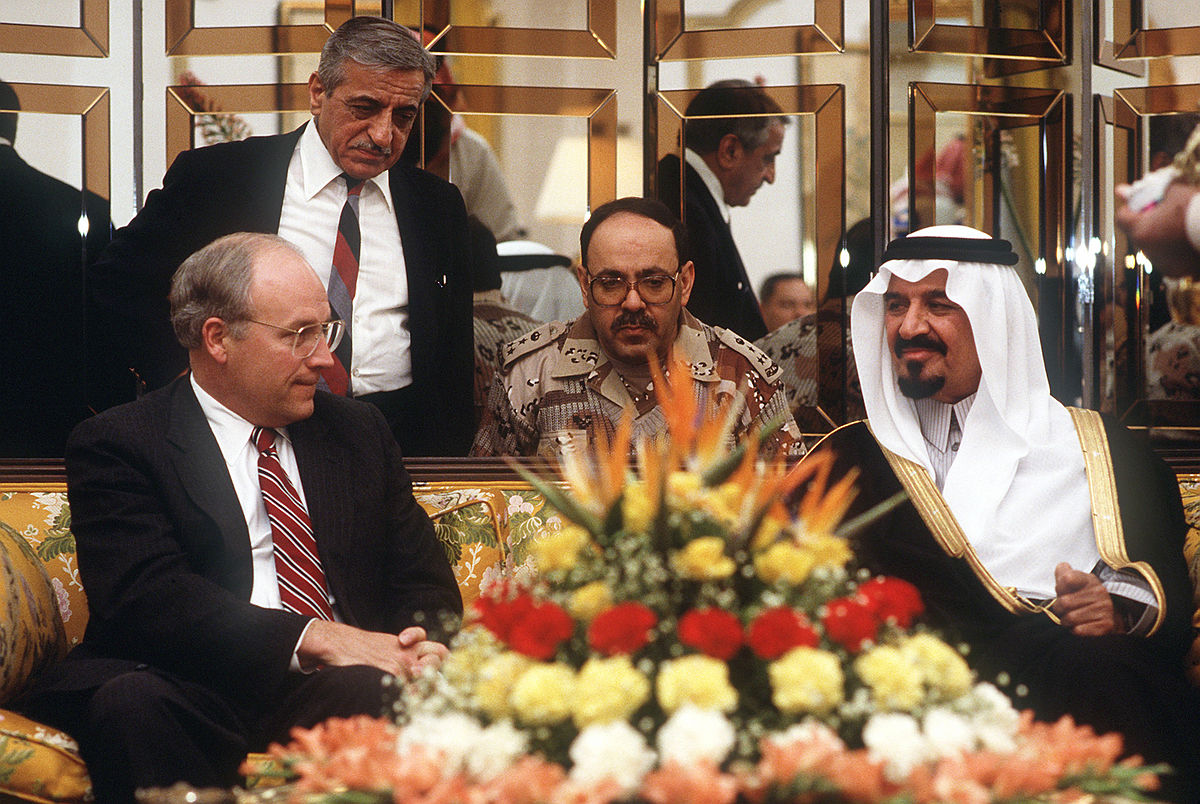
Fahd of Saudi Arabia
Saudi ArabiaKing Fahd succeeded Khalid as the ruler of Saudi Arabia in 1982, maintaining close ties with the United States and enhancing military purchases from the U.S. and Britain. During the 1970s and 1980s, Saudi Arabia emerged as the world's largest oil producer, leading to significant changes in its society and economy, largely influenced by oil revenues. This period saw rapid urbanization, expansion in public education, influx of foreign workers, and exposure to new media, which collectively transformed Saudi societal values. However, political processes remained largely unchanged, with the royal family retaining tight control, causing growing disaffection among Saudis seeking broader government participation.[48]
Fahd's reign (1982-2005) was marked by major events, including the Iraqi invasion of Kuwait in 1990. Saudi Arabia joined the anti-Iraq coalition, and Fahd, fearing an Iraqi attack, invited American and Coalition forces to Saudi soil. Saudi troops participated in military operations, but the presence of foreign troops spurred increased Islamic terrorism in the country and abroad, notably contributing to the radicalization of Saudis involved in the September 11 attacks.[48] The country also faced economic stagnation and rising unemployment, leading to civil unrest and dissatisfaction with the royal family. In response, limited reforms like the Basic Law were introduced, but without significant changes to the political status quo. Fahd explicitly rejected democracy, favoring governance by consultation (shūrā) in line with Islamic principles.[48]
Following a stroke in 1995, Crown Prince Abdullah assumed day-to-day government responsibilities. He continued mild reforms and initiated a more distant foreign policy from the U.S., notably refusing to support the 2003 U.S. invasion of Iraq.[48] Changes under Fahd also included expanding the Consultative Council and, in a landmark move, allowing women to attend its sessions. Despite legal reforms like the criminal code revision in 2002, human rights violations persisted. The U.S. withdrawal of most troops from Saudi Arabia in 2003 marked the end of a military presence dating back to the 1991 Gulf War, though the countries remained allies.[48]
The early 2000s saw a surge in terrorist activities in Saudi Arabia, including the 2003 Riyadh compound bombings, leading to a more stringent government response against terrorism.[53] This period also witnessed increased calls for political reforms, exemplified by a significant petition by Saudi intellectuals and public demonstrations. Despite these calls, the regime faced ongoing challenges, including escalating militant violence in 2004, with multiple attacks and deaths, particularly targeting foreigners and security forces. The government's efforts to curb militancy, including an amnesty offer, had limited success.[54]
